

There are three
types of muscles in the human body: cardiac, smooth and skeletal.
Cardiac muscle makes up the wall of the heart and is responsible
for the forceful contraction of the heart. Smooth muscles make
up the walls of the intestine, the uterus, blood vessels, and internal
muscles of the eye. Skeletal muscles are attached to the bones
and in some areas the skin (muscles in our face). Contraction of
the skeletal muscles helps limbs and other body parts move.
Most sources state that there are over 650 named skeletal muscles
in the human body, although some figures go up to as many as 840.
The dissension comes from those that count the muscles within a
complex muscle. For example the biceps brachii is a complex muscle
that has two heads and two different origins however, they insert
on the radial tuberosity. Do you count this as one muscle or two?
Although most individuals have the same general set of muscles,
there is some variability from one person to another. Generally,
smooth muscles are not included with this total since most of these
muscles are at cellular level and number in the billions. In terms
of a cardiac muscle, we only have one of those- the heart.
Muscles are given Latin names according to location, relative
size, shape, action, origin/insertion, and/or number of origins.
For example the flexor hallicis longus muscle is the long muscle
that bends the big toe:
- Flexor = A muscle that flexes a joint
- Hallicis = great toe
- Longus = Long
The following are muscles that have been deemed the strongest
based on various definitions of strength (listed in alphabetical
order):
External Muscles of the Eye
The muscles of the eye are constantly moving to readjust the positions of the
eye. When the head is in motion, the external muscles are constantly adjusting
the position of the eye to maintain a steady fixation point. However, the
external muscles of the eye are subject to fatigue. In an hour of reading
a book the eyes make nearly 10,000 coordinated movements.
Gluteus Maximus
The gluteus maximus is the largest muscle in the human body. It is large and
powerful because it has the job of keeping the trunk of the body in an erect
posture. It is the chief antigravity muscle that aids in walking up stairs.
Heart
The hardest working muscle is the heart. It pumps out 2 ounces (71 grams) of
blood at every heartbeat. Daily the heart pumps at least 2,500 gallons (9,450
liters) of blood. The heart has the ability to beat over 3 billion times
in a person’s life.
Masseter
The strongest muscle based on its weight is the masseter. With all muscles
of the jaw working together it can close the teeth with a force as great
as 55 pounds (25 kilograms) on the incisors or 200 pounds (90.7 kilograms)
on the molars.
Muscles of the Uterus
The uterus sits in the lower pelvic region. Its muscles are deemed strong because
they contract to push a baby through the birth canal. The pituitary gland
secretes the hormone oxytocin, which stimulates the contractions.
Soleus
The muscle that can pull with the greatest force is the soleus. It is found
below the gastrocnemius (calf muscle). The soleus is very important for walking,
running, and dancing. It is considered a very powerful muscle along with
calf muscles because it pulls against the force of gravity to keep the body
upright. This muscle keeps an individual from falling backwards.
Tongue
The tongue is a tough worker. It is made up of groups of muscles and like the
heart it is always working. It helps in the mixing process of foods. It binds
and contorts itself to form letters. The tongue contains linguinal tonsils
that filter out germs. Even when a person sleeps, the tongue is constantly
pushing saliva down the throat.
 Related
Web Sites Related
Web Sites |
| |
 Further
Reading Further
Reading |
- Biel,
Andrew. Trail guide to the body: how to locate muscles,
bones and more. Boulder, CO, Andrew Biel, c1997.
297 p.
- Llamas,
Andreu. Muscles and bones. Milwaukee, Gareth
Stevens Publications, 1998. 32 p. (Juvenile).
- Nigg,
Benno M., and Walter Herzog editors. Biomechanics
of the musculo-skeletal system. 3rd edition. New
Jersey, John Wiley and Sons, 2007. 672 p.
- Oatis,
Carol A. Kinesiology: the mechanics and pathomechanics
of human movement. Philadelphia, Lippincott, Williams,
and Wilkins, c2004. 899 p.
- The
Skeletal system / the muscular system. Chicago,
World Book, c2007. 48 p (Juvenile).
- Van
de graff, Kent. Human anatomy. 6th edition.
Boston, McGraw Hill, 2002. 840 p.
- World
of anatomy and physiology. K. Lee Lerner and Brenda
Wilmoth Lerner editors. Detroit, Thomas/Gale, c2002.
2v.
|
 For
more print resources... For
more print resources...
Search on "Biomechanics," "Human
anatomy," "Kinesiology," "Muscles," or "Musculoskeletal
system"
in the Library of Congress Online
Catalog.
|
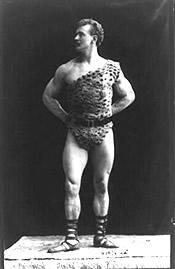
Strong man, 1895. Prints
and Photographs Division, Library of Congress.
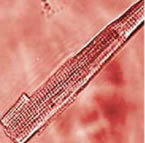
Magnified,
a heart muscle cell contracts. Billions of these cells contracting
in synchronization produce a heart beat. National Institute
on Aging, NIH Web site.
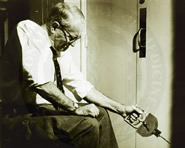
Strength
training. From Images from the History of Medicine, National
Library of Medicine Web site.
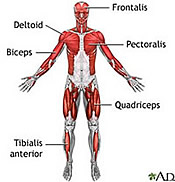
Superficial
anterior muscles. From the MedlinePlus Web site.
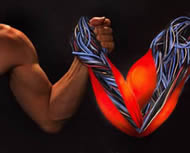
A
challenge - artificial arm vs. human arm?
From the NASA Web site.
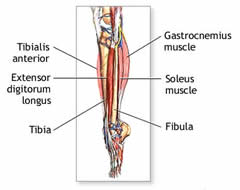
Lower
leg muscles. MedlinePlus Web site.

Structure
of a skeletal muscle. From the U.S. National Cancer Institute's
Surveillance, Epidemiology and End Results Program.
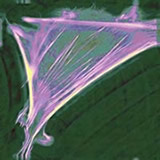
Genetically
engineered smooth muscle cells. From the NIST Web site.
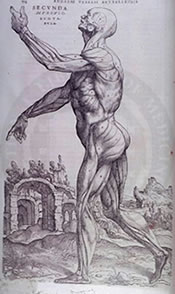
Musculature of the human body.
Geminus, Thomas, d. 1562.
From Images from the History of
Medicine, National Library of Medicine Web site.

A Spacelab 1 payload
specialist exercises while instruments measure his heart's operation
in microgravity. From the NASA Web site.
|

 For
more print resources...
For
more print resources...








